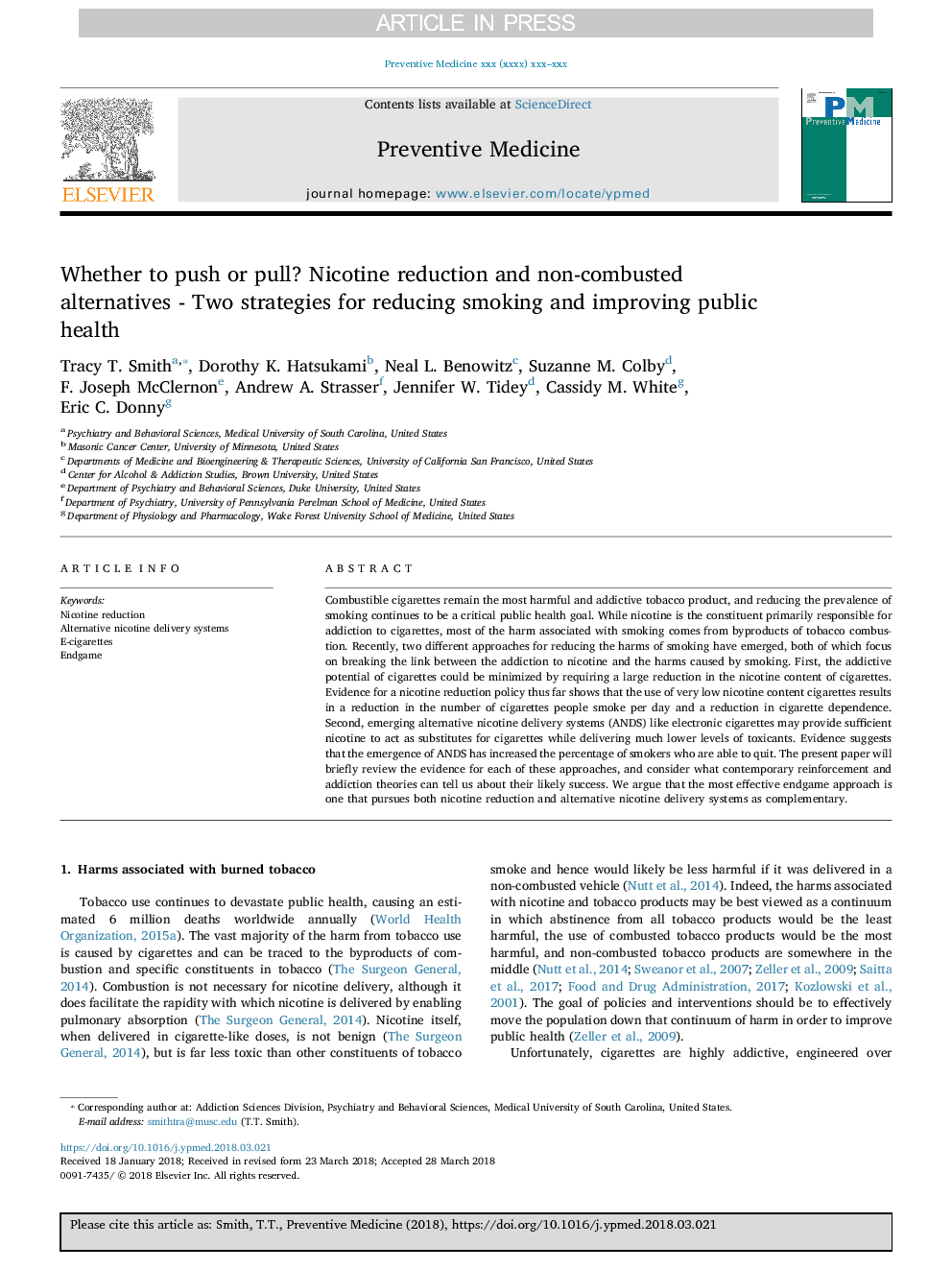ترجمه فارسی عنوان مقاله
آیا فشار دادن یا کشیدن؟ کاهش نیکوتین و جایگزین های غیر احتراق - دو راهبرد برای کاهش سیگار کشیدن و بهبود سلامت عمومی
عنوان انگلیسی
Whether to push or pull? Nicotine reduction and non-combusted alternatives - Two strategies for reducing smoking and improving public health
| کد مقاله | سال انتشار | تعداد صفحات مقاله انگلیسی |
|---|---|---|
| 136137 | 2018 | 7 صفحه PDF |
منبع

Publisher : Elsevier - Science Direct (الزویر - ساینس دایرکت)
Journal : Preventive Medicine, Available online 29 March 2018

